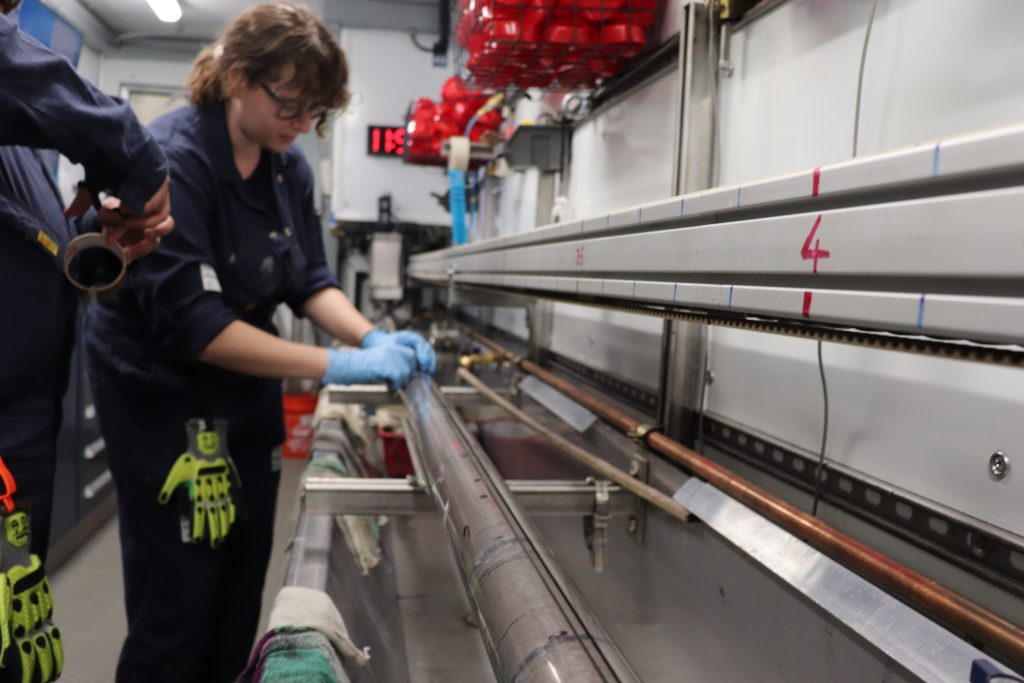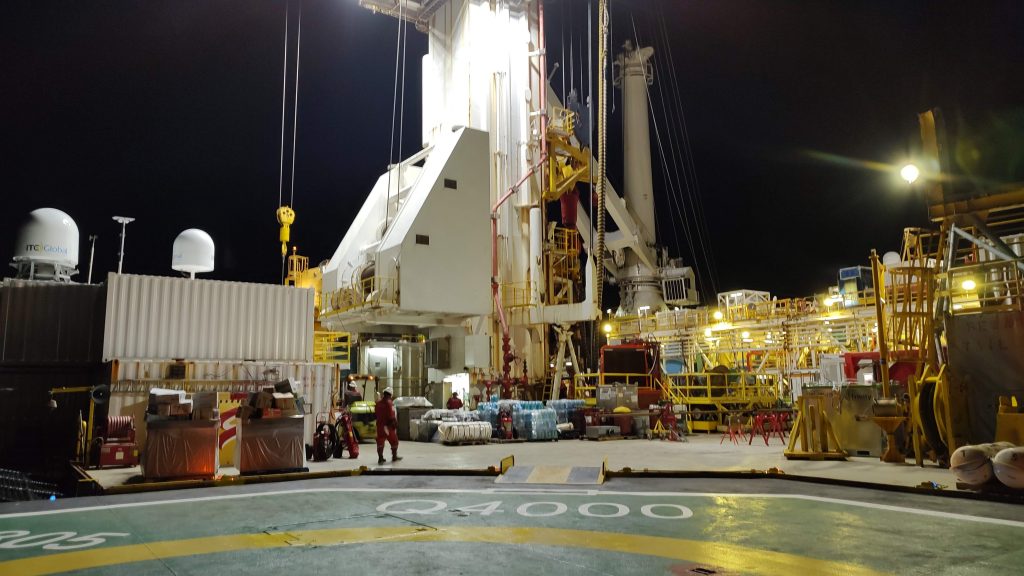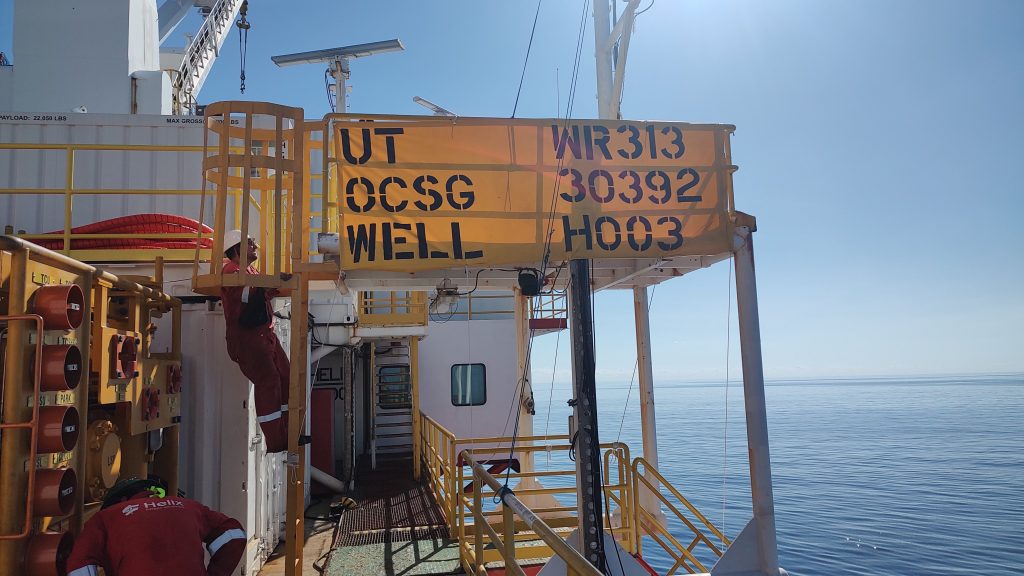Read the Gulf of Mexico Methane Hydrates Expedition Blog Here.
Holding Tight
By Monica Kortsha Last night, Peter Flemings, the mission’s lead scientist and a professor at The University of Texas at Austin Jackson School of Geosciences, called the science team together. He wanted to make sure everyone was up to speed on the science and the mission progress – which had picked up momentum during the… Continue Reading Holding Tight
Cutting Core, Seeing Signposts
By Monica Kortsha Earlier this week, I watched a core sample slide into the processing lab for the first time, the drill crew pushing it through a hole cut into the side of the shipping container that houses the lab. Surrounded by a clear plastic tube, the core offered a first look at sediment about… Continue Reading Cutting Core, Seeing Signposts
Progress from Delay
By Monica Kortsha Over the past four days at sea, the science team has faced the following issues: Thankfully, each obstacle has been overcome to different degrees. Pressure readings aren’t available but a probe on the coring tool is taking temperatures. The pressure-valve sealed on the second attempt, capturing a beautiful pressurized core sample, which… Continue Reading Progress from Delay
The Stuff of Life at Sea
By Monica Kortsha The mission to recover methane hydrates has scientists set on recovering core samples of the substance from over 1,000 feet beneath the seafloor. To actually reach these samples requires the science team to live and work aboard a specialized vessel named Helix Q4000. I took the helicopter out to the Q4000 on… Continue Reading The Stuff of Life at Sea
- « Previous Page
- 1
- …
- 19
- 20
- 21
- 22
- 23
- …
- 29
- Next Page »





